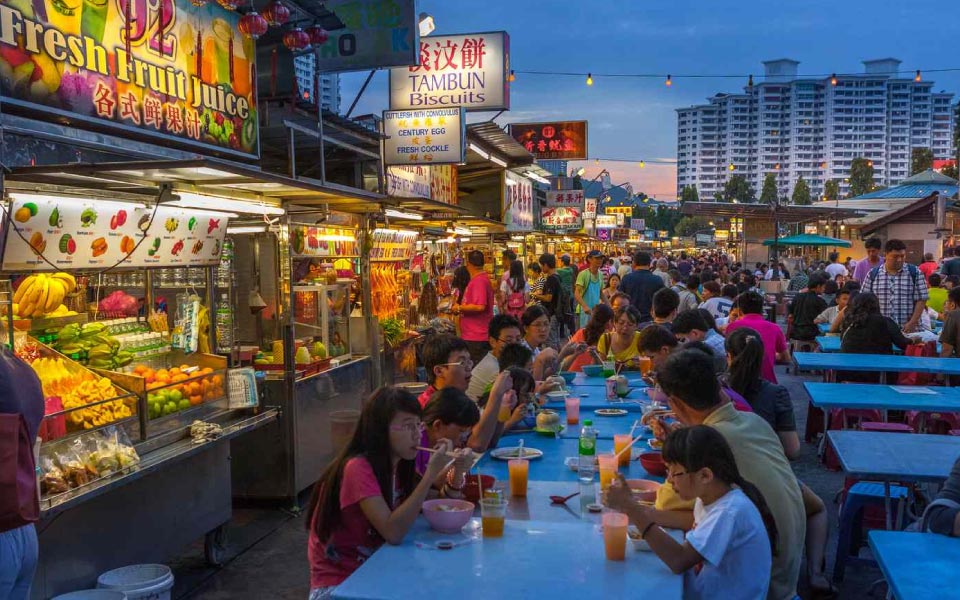Penang is often called the “Pearl of the Orient,” and while many know it for its food, beaches, and colonial charm, the island is also home to one of the richest multi-faith landscapes in Southeast Asia. From ornate Buddhist temples to grand mosques, colourful Hindu shrines, Taoist temples, and historic Christian churches, Penang is a living example of cultural and religious harmony.
Exploring Penang through its diverse houses of worship is not just sightseeing—it’s a journey through centuries of migration, trade, and community life.
The Street of Harmony in George Town
No exploration of Penang’s spiritual diversity is complete without a visit to the Street of Harmony in George Town. Along Jalan Masjid Kapitan Keling, four major faiths coexist within steps of each other:
- Kapitan Keling Mosque – Built by Indian Muslim traders in the 19th century, its domes and minarets remain an iconic landmark.
- Sri Mahamariamman Temple – Penang’s oldest Hindu temple, featuring a gopuram tower adorned with colourful deities.
- Goddess of Mercy Temple (Kuan Yin Teng) – A Taoist temple dating back to 1728, still busy with devotees lighting incense daily.
- St. George’s Anglican Church – The oldest Anglican church in Southeast Asia, with a stately neoclassical façade.
This short stretch alone captures Penang’s essence as a meeting point of cultures and religions.
Buddhist Temples Across the Island
Beyond George Town, Penang’s Buddhist temples are among its most iconic landmarks:
- Kek Lok Si Temple, Air Itam – The largest Buddhist temple in Malaysia, famed for its seven-story pagoda and towering bronze statue of the Goddess of Mercy.
- Dhammikarama Burmese Temple, Pulau Tikus – The only Burmese Buddhist temple in Penang, filled with intricate carvings and cultural relics.
- Wat Chaiyamangalaram, Pulau Tikus – Home to one of the world’s longest reclining Buddha statues, a dazzling Thai Buddhist temple filled with vibrant ornamentation.
These temples highlight Penang’s role as a cultural crossroads for Chinese, Thai, and Burmese communities.
Taoist Temples
With a huge population of Chinese in Penang, Taoist temples is one of the significant religious buildings in the state.
- Kuan Yin Teng (Goddess of Mercy Temple), George Town – The oldest Taoist temple in Penang, dedicated to the Goddess of Mercy, Guan Yin.
- Snake Temple, Bayan Lepas – Built in 1805 in honor of the Taoist deity Chor Soo Kong, it is uniquely home to pit vipers that reside within its halls.
- Thean Kong Thnuah Temple, Air Itam – A less touristy but culturally significant Taoist temple that is built specifically to worship the Jade Emperor.
These temples remain active community hubs where rituals, festivals, and Taoist traditions are kept alive.
Islamic Heritage in Penang
Islam arrived in Penang long before British colonisation, with traders from India and the Middle East shaping the island’s religious fabric. Notable mosques include:
- Kapitan Keling Mosque, George Town – The island’s most famous mosque, still active as a community hub.
- Acheen Street Mosque, George Town – Founded by Arab traders, it features unique Moorish-inspired architecture.
- Masjid Negeri Pulau Pinang, Jalan Air Itam – Penang’s State Mosque, a striking modern structure with sweeping domes and an expansive prayer hall.
Each mosque reflects the layered Islamic traditions of Penang’s Tamil Muslim, Arab, and Malay communities.
Hindu Temples and Thaipusam
Penang’s Hindu temples play a vibrant role in the island’s spiritual landscape:
- Sri Mahamariamman Temple, George Town – The heart of Penang’s Little India and the starting point for the annual Thaipusam procession.
- Arulmigu Balathandayuthapani Temple (Waterfall Hill Temple), Jalan Kebun Bunga – Dedicated to Lord Murugan, this hilltop temple with 500 steps is the culmination point of Penang’s Thaipusam procession.
- Nattukottai Chettiar Temple, Jalan Kebun Bunga – Plays a vital ceremonial role in Thaipusam, serving as an important station for devotees and organisers.
During Thaipusam, Penang becomes a sea of colours and devotion as thousands of kavadi bearers and pilgrims join the procession from George Town to the Waterfall Hill Temple.
Christian Heritage Across the Island
Christianity came with the Portuguese, Dutch, and British, leaving behind churches that remain integral to Penang’s identity:
- St. George’s Anglican Church, George Town – A colonial-era gem and one of Penang’s most photographed churches.
- Church of the Assumption, George Town – Established in 1786 following the founding of George Town, it was the first Roman Catholic church in the area.
These churches represent the continuity of Christian traditions on the island, from colonial roots to contemporary worship.
Why Penang’s Multi-Faith Heritage Stands Out
Penang’s religious diversity is not just about historic sites—it’s about living traditions. On the island, Chinese New Year, Thaipusam, Hari Raya Aidilfitri, Deepavali, and Christmas are celebrated openly, often with participation across faiths. This cultural coexistence is a defining feature of Penang, making it not only a tourist destination but also a symbol of Malaysia’s pluralism.
Tips for Exploring Penang’s Religious Sites
- Dress modestly – Temples, mosques, and churches often have dress codes.
- Plan festival visits – Time your trip around Thaipusam, Chinese New Year, or Ramadan bazaars for an immersive experience.
- Respect rituals – Photography may be restricted in certain prayer halls.
- Travel beyond George Town – Visit Kek Lok Si, Snake Temple and Waterfall Hill Temple for a broader view of Penang’s faith heritage.
- Engage local guides – Walking tours and heritage talks bring deeper stories to life.
From Taoist shrines to Buddhist temples, Hindu processions to Christian churches, and grand mosques across the island, Penang is a living museum of multi-faith harmony. Each site tells a story of devotion, migration, and shared community. For travelers, exploring Penang’s spiritual heritage is one of the most rewarding ways to understand the island’s cultural heartbeat.








